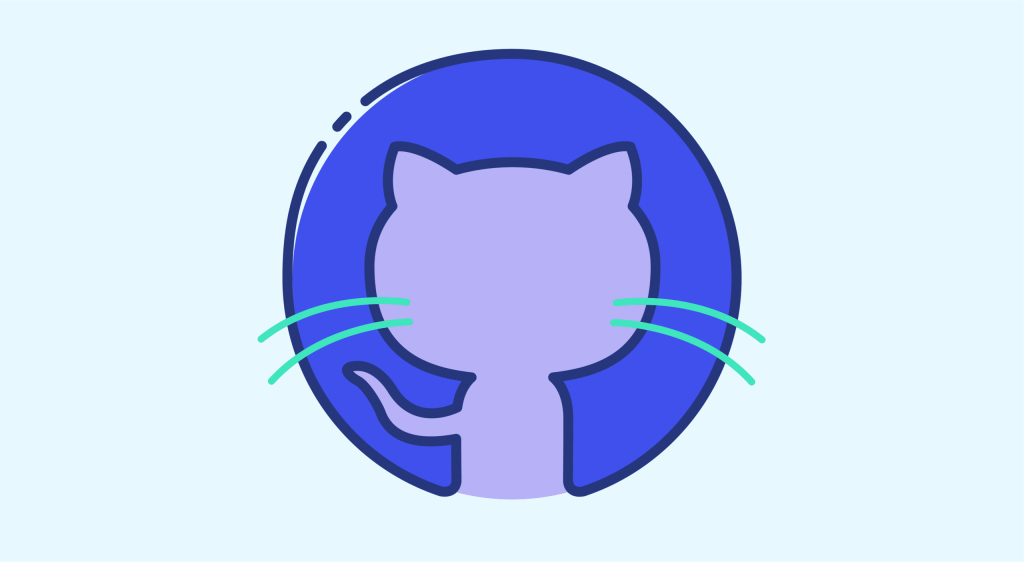The GitHub platform allows computer programmers to freely collaborate on code projects. Find out everything you need to know about this massively used service in Data Science and Machine Learning, and how to learn to use it.
What is Github?
GitHub is an open-source hosting service, allowing programmers and developers to share the computer code of their projects in order to work on them in a collaborative way. It can be considered as a Cloud dedicated to computer code.
The source code of projects is hosted in different programming languages, and the changes made in each iteration are kept in memory. Other GitHub users can review the code and suggest changes or improvements.
One of the main features of GitHub is its version control system. With this feature, other users can modify the code of a software without directly impacting the software or the experience of current users. Proposed changes can be incorporated into the software, after being reviewed and approved.
Another strength is the ability to integrate GitHub with most common platforms and services such as Amazon, Google Cloud or Code Climate. In addition, this service is compatible with the syntax of more than 200 different programming languages.
Note that GitHub is not the only website dedicated to collaborative software development through version control. However, it is certainly the most popular. In July 2020, the platform federates more than 45 million users.
The success of this service has attracted the attention of Microsoft. In 2018, the American giant acquired GitHub for $7.5 billion in stock.
How does GitHub work?
To understand how GitHub works, it is relevant to review three of its main features: forking, pull requests, and merging.
Forking consists in creating a copy of a project. Thus, it is possible to experiment freely on this project without affecting the original.
After making satisfactory changes, you simply submit a pull request. This request is sent to the project owner, who can then review the changes made and ask any questions.
If the project owner is satisfied with the proposed changes, all that remains is to merge the pull request with the original code. The changes will then be made to the original project.
What are its advantages of Github?
GitHub owes its success to the many advantages it offers to developers. Here are its main strengths.
A social network for developers
The success of GitHub is linked to the many advantages it offers to developers. This service can be seen as a social network for programmers, and in fact, represents the largest global community dedicated to coding.
Developers can share their projects publicly and receive not only help, but also a lot of potentially very beneficial exposure.
Once a project is shared on GitHub, all programmers and other enthusiasts in this community can evaluate it. The author of the project can thus be warned in case of problems that he would not have noticed alone. The community can even propose solutions directly to the author and allow him to save precious time.
Complete traceability of modifications
On GitHub, all modifications made to a project are saved in a “changelog”. It is therefore easy to know exactly what changes have been made to each new version.
This feature is very useful to look back and identify the changes made by a collaborator. It is possible to go back to the initial creation of the project, to review what changes were made, by whom, and at what date.
An Open-Source platform
On GitHub, projects are presented as open-source code. This allows anyone to view the code and propose changes.
This is a real strength because Open-Source projects are generally more flexible. Indeed, they can react and adapt more quickly to market demands. Closed-source software, on the other hand, has to convince a target market of its value.
With GitHub, an entire community of programmers can work constantly on finding solutions to real-world problems. And these solutions can be offered directly to the public.
A talent pool
The GitHub community is so large that it is common for a user to find programmers working on projects similar to his own. It is also possible for a company to meet programmers with complementary skills, experience, or vision.
By joining this community, it is possible to identify these people, work with them, and eventually hire them. It’s the best place to meet new talent.
Smooth and seamless collaboration
When many people are working on a project at the same time, even though they are in different geographical locations, they are likely to be uncoordinated or overlap with each other. For example, one collaborator may solve a problem in a way that is incompatible with another’s approach.
With GitHub and its version control system, this problem is solved. Collaborators can work together without getting in each other’s way. Everyone can see and know what everyone else is doing in real-time, and projects can be optimally managed according to the needs of the business or organization.
GitHub for Data Science and Machine Learning
Version control is an important concept for the Data Scientist profession. It allows for more efficient teamwork, facilitates collaboration on projects, sharing of work, and helping each other repeat similar processes. Even for a loan Data Scientist, this practice allows one to experiment with changes and test them without directly impacting the project.
Data Engineers and Machine Learning Engineers also use this platform very frequently. It simply allows them to experiment with the production of Machine Learning models before applying them. Thus, GitHub is an essential tool for data engineering and Machine Learning.
How does GitHub work?
To learn how to use GitHub and master all its subtleties, you can turn to GitHub training. With DataScientest, you can discover all the tricks of this tool through our Machine Learning Engineer training or our Data Engineer training.










